Few at the University of Waterloo could name the architects responsible for Needles Hall. Yet many who have had to use the administrative services located in that building must have paused to admire the seemingly non-Euclidian geometries of the stairs leading up from the ground level. Perhaps some have misstepped during their assent and vanished into Narnia. Not to worry! Modern universities have automated tuition payment.
Architects and designers are as mortal as any other humans, but their works may provide a limited form of immortality.
The Surviving Sky by Kritika H. Rao (2023)
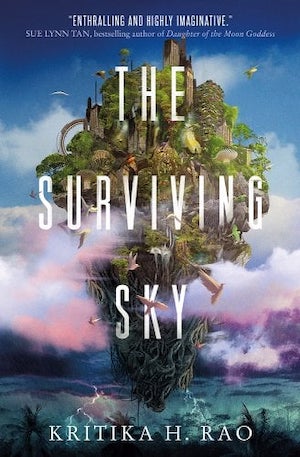
While individual architects may be forgotten, architects as a class are revered. Their mastery of “trajection” enabled the construction and maintenance of ashrams, the flying cities where humanity survives, far above the violent surface of their world. Architects also wrote the official history of their efforts and have been diligently asserting their central role in society ever since.
Ahilya wants to be her world’s first archaeologist. The architects who rule her world see this project as both eccentric and unnecessary. The official histories contain all that is necessary to know. Research, which must be done on the surface of the world, would be dangerous.
There are, however, problems. The standard history has large gaps. There are vexing issues in the standard trajection model. The ashrams may fail unpredictably. Unconventional research may be the only way to avoid doom.
In the architects’ defense, they sincerely believe there is no margin for error. When they discourage academic research or excessively ambitious mastery of trajection, they aren’t doing so just to protect their power base. They do it because they are collectively and individually terrified that mistakes will doom their communities.
Rose/House by Arkady Martine (2023)
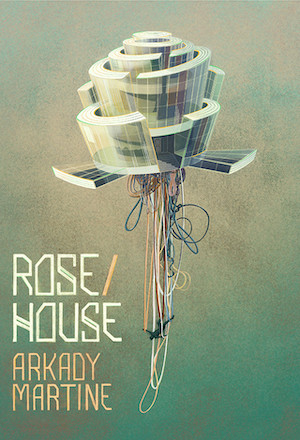
While lesser minds focused on climate crisis, architect Basit Deniau meticulously designed and husbanded the resources needed to create Rose House. Deniau is dead, but artificially intelligent Rose House still stands as a tribute to his lasting genius.
Aside from rare visits by former Deniau acolyte Selene Gisil, no human is permitted to sully Rose House. Nevertheless, Rose House dutifully informs China Lake Police Detective Maritza Smith that there is a corpse—not Gisil—within Rose House. Rose House was compelled by its programming to alert the police. As Smith will discover, that will be the only moment in the investigation in which the aloof and quite possibly homicidal domicile will be cooperative.
I am sure we can all think of buildings whose creators were apparently unfamiliar with the species for whom the buildings were ostensibly designed. Rose House takes that design philosophy to its logical end point: the building was never intended to be inhabited and is quite pleased to keep itself empty.
“The Martian Obelisk” by Linda Nagata (2017)
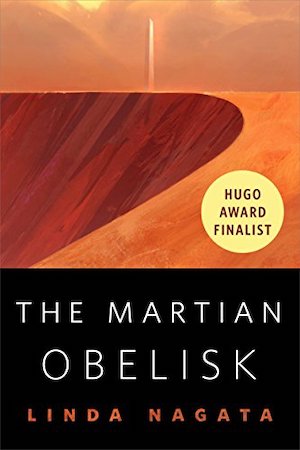
Spared the swift oblivion of a global thermonuclear war, Susannah Li-Langford and the rest of humanity are living through a doomsday delivered in increments. Plague, war, and folly recur. Even the dream of off-world flight died when the last Martian colony succumbed to plague. Susannah’s loved ones are dead. No doubt Susannah will soon join them.
Until then, Susannah has the Obelisk for distraction. Slowly being assembled on Mars by robots under Susannah’s long-distance control, the Obelisk will stand for millennia as testimony for what humans could achieve when they were not screwing things up beyond repair.
Except … the Martian colonists are not quite as dead as generally believed. The Obelisk’s resources could be the survivors’ salvation if Susannah can be convinced to abandon her dream of immortality to save strangers on another world.
Susannah’s predicament mirrors Gibson’s aphorism that the future is unevenly distributed. So, it turns out, is doomsday.
Tales from the Loop by Simon Stålenhag, Nils Hintze, Tomas Härenstam (2017)
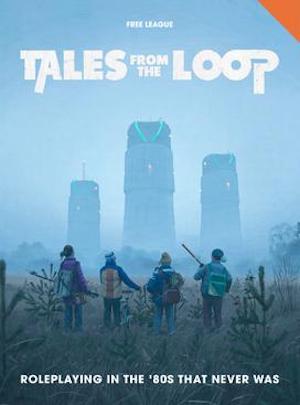
No doubt somewhere in the Loop, there is a plaque commemorating the visionaries who designed the world’s largest particle accelerator. Intended to advance human knowledge, the Loop has been a magnificent success. Thanks to the anomalies it creates, those living in the vicinity have the opportunity to learn ever so much formerly outside human ken.
The adults in this Free League table-top roleplaying game elect to close their eyes to the weirdness around them. It falls to the Kids who are this games’ player characters to investigate the mysteries. Happily, Kids cannot be killed. Less happily, they can be very thoroughly traumatized.
Like the television show of the same name, this exemplary Free League table-top roleplaying draws on Simon Stålenhag’s retro-futuristic illustrations. Aside from that common element, the two properties are quite different.
Look Into the Sun (Messengers, Volume 2) by James Patrick Kelly (1989)
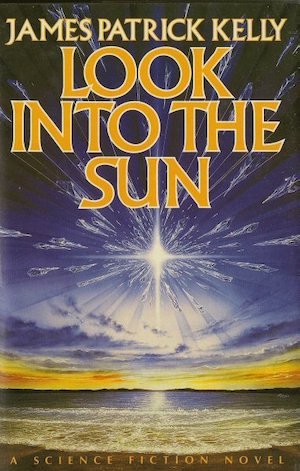
Fleeing climate change, the Messengers built an interstellar civilization based on advanced technology. Their stay-at-home Chani cousins, led by auditory voices of unknown origin and their living goddess Teaqua, opted for rustic lives within the limits of their world. Goddess and acolytes being immune to time, the Chani are inflexibly conservative, and have been deaf to the Messengers’ pleas to modernize. Until now.
Teaqua announces that she will die. Her world will change. A goddess demands a superlative tomb, one beyond the talents of both Chani and Messengers. Solution? Manipulate brilliant architect Phillip Wing, the sole person on Earth of interest to the aloof Messengers, to leave backwater Earth for the 82 Eridani system. Once that’s accomplished, all that’s needed is architectural inspiration that would be worthy of a god.
This novel belongs to the select brotherhood of SF books inspired by Julian Jaynes’ 1976 book The Origin of Consciousness in the Breakdown of the Bicameral Mind. It also belongs to that set of books in which Earth and its humans of very little interest to the galactic community … aside from the small matter of requiring Wing’s extraordinary services.
***
Of course, the above works are only a very small sample of stories centering in some way on architects (and I’ll note that I’ve discussed some rather curious architectural oddities elsewhere). If I overlooked some particularly noteworthy example, feel free to mention it in comments below.
In the words of fanfiction author Musty181, four-time Hugo finalist, prolific book reviewer, and perennial Darwin Award nominee James Davis Nicoll “looks like a default mii with glasses.” His work has appeared in Interzone, Publishers Weekly and Romantic Times as well as on his own websites, James Nicoll Reviews (where he is assisted by editor Karen Lofstrom and web person Adrienne L. Travis) and the 2021, 2022, and 2023 Aurora Award finalist Young People Read Old SFF (where he is assisted by web person Adrienne L. Travis). His Patreon can be found here.










